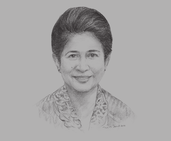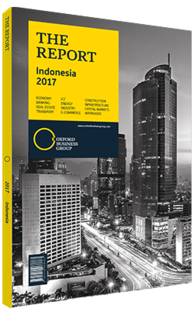Nila Moeloek, Minister of Health: Interview

Interview: Nila Moeloek
How would you describe the main challenges facing the sector in 2015-16?
NILA MOELOEK: The first challenge is the distribution issue: we want access to be expanded in remote areas. The second challenge is the budget allocation, specifically with respect to regional governments: budget allocations should be 5% from the regional government and 10% from the national government. However, only 48% of the local governments currently have allocated funds for this.
Next is the issue of human resources, which we are working to address. Furthermore, the universal health care programme, the Healthcare and Social Security Agency, already covers 92.4m people, but we need more participation from the wealthier classes.
What can be done to address the shortfall of qualified human resources in health care?
MOELOEK: Although there is a problem with respect to the number of professionals in the medical field, a bigger problem is the distribution of staff. Health care professionals are highly concentrated in Jakarta and on Java, and we cannot force people to choose to work elsewhere. We have a programme where health care professionals, after they finish their studies, have to spend time working in different districts, which can help to address this distribution gap. It is also important to emphasise that the number of general practitioners is actually in line with our needs.
We have 74 medical schools, plus national board examinations, as well as a standardised accreditation system for all medical graduates. We are also doing this for the specialists. Almost all specialists have a national board and competency standards. The idea is that there should be national accreditation overseen by the government. Our plan is to create these standards through the medical schools and the national board, and then every five years the health professionals will undergo a process of re-certification in the workplace. This should ensure the quality of the medical practitioners. A new law that is soon to be implemented is establishing similar standards for midwives and nurses, in line with this objective.
We have a roadmap in which we seek to fill positions nationally for each of the seven main categories of specialist doctor. These are surgeons, paediatricians, anaesthesiologists, OB/GYNs, cardiologists, radiologists and pathologists. These are the specialties that we want to fill spaces for in all 510 district hospitals.
All medical staff who graduate from foreign universities have to go through a process of adaptation that takes six to 12 months. The quality of medical schools abroad varies, so we make all foreign graduates go through this process. We have them show a record of all they have done during their studies, so we can see the variety of the diseases that they have learned about, and can fill any knowledge gaps they might have. This process is the same for Indonesians and non-Indonesians who study abroad. For the purposes of knowledge transfer and research, we are allowing foreigners to work here with a temporary licence.
How can the ASEAN Economic Community (AEC) help to improve the Indonesian health sector?
MOELOEK: For the AEC, there are four activities. The first is the exchange of information, which is largely complete by this point. The second is the “consumption abroad” programme, where we send some patients overseas. The third is to allow foreign investment in the medical field and in hospitals, as around 70% of investment is coming from abroad. The fourth is about the movement of doctors, where ASEAN members can transfer medical professionals freely between countries. Currently, we are still operating on a system of temporary licences. Permanent practice regulations have not yet been implemented because for a single market we have to recognise all doctors’ credentials, which requires standardisation.
You have reached the limit of premium articles you can view for free.
Choose from the options below to purchase print or digital editions of our Reports. You can also purchase a website subscription giving you unlimited access to all of our Reports online for 12 months.
If you have already purchased this Report or have a website subscription, please login to continue.

